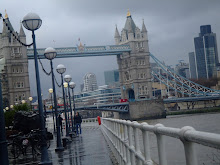It occurred to me the other day that despite its title, this blog has not given Bermondsey much of a mention for a while. So it was serendipitous when BH brought home a book sponsored by the South Bermondsey Partnership and written by local historian, Debra Gosling titled "Down the Blue".
For those amongst the readership of this blog who are unfamiliar with the area, 'The Blue' is an area at the intersection of Southwark Park Road, St James's Road and Blue Anchor Lane. There are shops, caffs (sic) , a library and a market. Here is a little map:-
When we first moved to this area, 'The Blue' was a bit of a mystery to BM - especially the name, it didn't make sense unless you assumed it was because of the 'Blue Anchor' pub. After a while, I got used to the name, grew to appreciate the usefulness of (some) of the shops and gave no further thought to the matter.
But I love a story and Debra Gosling has conducted extensive research into the issue and her book makes fascinating reading.
It starts with a colour - blue, which for centuries was associated with all things holy. 'Anchor' could of course refer to the river and maritime connection but in ancient times, it also denoted a pious hermit or Anchorite who gave his life to God and lived in a small hut on whatever food or alms he was given by kindly passers-by. In medieval times, Bermondsey Abbey along the road, stood as a fortress of godliness south of the river but served primarily the aristocracy (dowager Queens of England were sent there to die) and the upper echelons. To the west of the abbey, lay marshland and meadows and the lonely road to Canterbury, the destination of many a pilgrim. Since they could not rely on the Abbey monks for spiritual guidance, many of these pilgrims would stop and pray along the journey with Anchorites. They were revered and received bequests in wills from the better-off among their visitors. One such will dating from the 15th century refers to a hermit 'in the meadows beyond the Thames'.
After the Reformation, its not clear what became of the hermits but from at least 1696, a map from the local studies library shows a gate at 'Blew Anchor', the site of the current Blue Anchor pub.
There endeth the history lesson - go and buy the book (or borrow from Blue Anchor Library).
p.s.next time some photos of the new 'Blue'.
Sunday, 10 April 2011
Subscribe to:
Comments (Atom)





